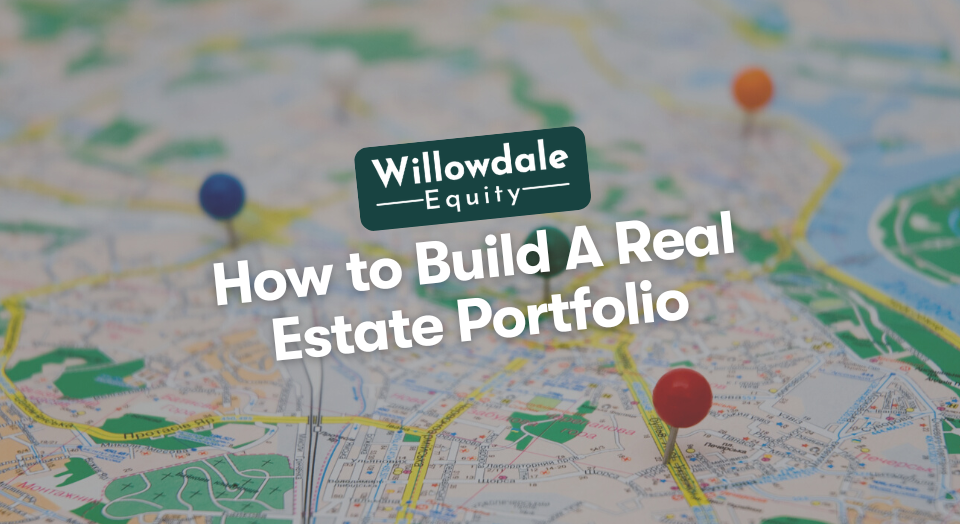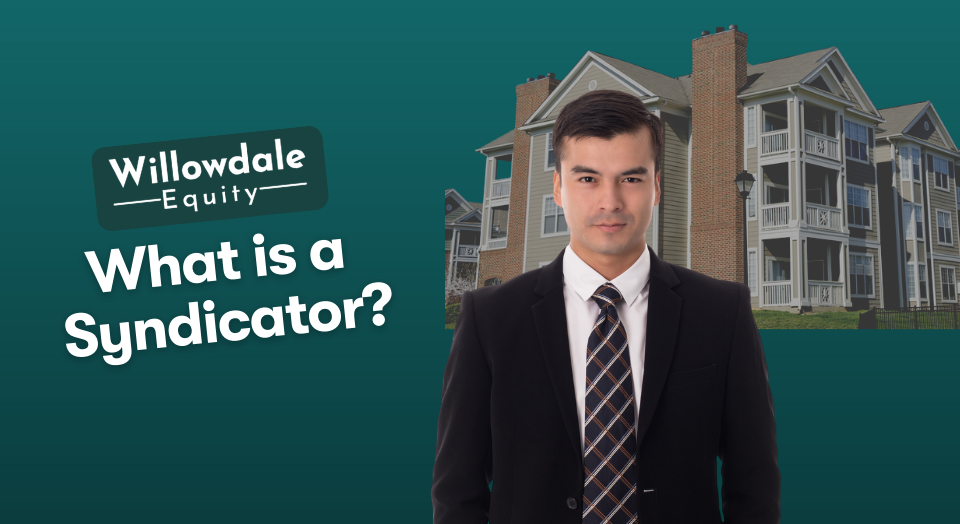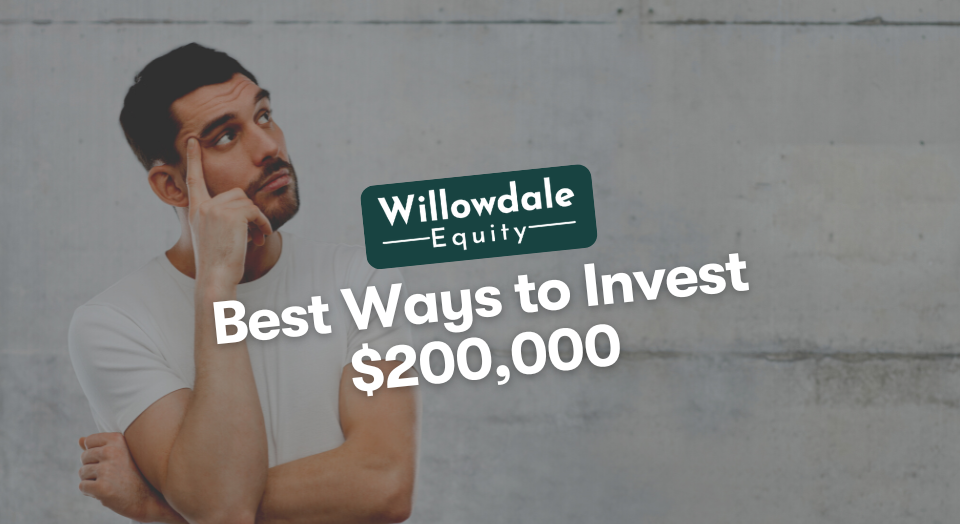
How to Build A Real Estate Portfolio: Real Estate Portfolio Investment Strategies
This article is part of our passive investors guide on real estate syndications, available here.
Building your real estate portfolio can seem daunting, but it does not have to be. It is essential to understand how to build a real estate portfolio that is resilient. Still, it will likely not happen without hard work and determination. You can build a successful investment plan tailored to suit your needs with the proper knowledge and strategy. It’s important to note that there is no one way to make your real estate empire.
This blog post will guide you through multiple investment strategies that you can use to build your real estate portfolio.
Key Takeaways
-
One of the most important things you must do when determining how to build your real estate portfolio is to assess your risk tolerance.
-
Ensuring the property you purchase is worth more after the renovations are complete than the cost of what you paid for it, closing costs, property taxes during the time you owned it, insurance, plus improvement costs.
-
Purchasing commercial properties, specifically multifamily real estate, is a much better strategy for building a real estate investment portfolio quickly because you can buy multiple rental units in one transaction.
-
Larger commercial properties generate a substantial amount of positive cash flow each month, and as a result can afford to pay a highly experienced property management company, contributing to a safer real estate investment.
Figure out where you stand
This is a crucial stage in learning how you’ll go about developing your real estate portfolio. You must figure out what risks you’re willing to take and how much you plan to grow your real estate portfolio (while being realistic). You also need to know where you stand financially and whether you want to make money from scratch like some real estate investors do or if you want to make more external money before getting started in real estate investing.
Risk Vs. Reward

One of the most important things you must do when determining how to build your real estate portfolio is to assess your risk tolerance. As a general rule of thumb, the riskier an investment strategy is, the more significant it pays for the investor, and the safer a strategy is, the lower its returns will be. Some strategies have minimal risk but require a ton of work and can be highly time-consuming.
Time Vs. Money
Another essential thing to understand about yourself is how much time and money you have to allocate toward real estate investing. This is needed because every real estate strategy involves money or time investment. In most cases, it will require both.
1.) Wholesaling Real Estate Investing Strategy
Wholesaling real estate is an excellent strategy for beginner real estate investors with plenty of time but little money. It involves finding property usually below market value and then reselling that same investment property to another investor for a higher price without making any repairs. To do this successfully, you must find a real estate opportunity that is so good that another real estate investor will pay you a fee to buy your contract, which gives them the right to close on your real estate transaction. This resale happens before even closing on the investment property, meaning the wholesaler never takes real estate ownership. Because of this, you are wholesaling real estate is a very low-risk way to make some money by investing your time into real estate.
Lower Risk
Not taking ownership means you don’t need to hire contractors, have a down payment, or apply for any loans (if you have bad credit or no credit, it’s not a problem). A typical real estate wholesale fee ranges from $5,000 to $20,000. The best way to find wholesale real estate deals is by attending foreclosure or tax sale auctions. You can even find some great real estate deals on the Multiple Listings Service (MLS), where properties are usually known to sell for total retail value.
Although wholesaling real estate is relatively simple, it’s not easy. An intelligent investment strategy would be making wholesale money first while continuing to work on your overall real estate education.
Growing Your Knowledgebase
Wholesaling real estate or even just attempting to wholesale real estate is excellent for expanding your real estate knowledge because other investors will typically give some feedback on the real estate deals you put in front of them. Over time you can start to get a feel for what type of real estate investments other investors are interested in and which ones to avoid. You can continue to wholesale if you are good at it. Still, wholesaling can be extremely time-consuming and is not usually a good long-term strategy unless you can hire employees and create systems to turn it into a passive business.
Buying real estate must be a top priority if your goal is to build a real estate portfolio. Once you have enough money together (from wholesaling real estate or elsewhere), you need to put that money to work via real estate ownership. Real estate investors use two main strategies to make money: flipping real estate or holding it. You can choose to go straight into buying rental property for rental income or fixing and flipping for big paydays.
2.) Fix & Flip Real Estate Investing Strategy

This real estate investing strategy is one of the most profitable. Many flipping shows on TV make this strategy look easy, but it’s not true. First off, finding a house at a price worth flipping is a challenging task. This is why wholesalers get paid thousands of dollars for finding one. This strategy entails buying and renovating a property to resell for profit. The key to this strategy is ensuring the property you purchase is worth more after the renovations are complete than the cost of what you paid for it, closing costs, property taxes during the time you owned it, insurance, plus improvement costs.
How to Flip
Flipping can be done in a couple of ways: by doing all the repairs yourself (if you’re handy, of course) and then selling the property, or by hiring a general contractor to do all or most of the work for you. You can also use your own money or get a hard money loan (a short-term asset-based loan) along with a down payment. Another way to finance the investment property is through private money lenders, people who lend money for things like this. Also, having a real estate license can save some money on real estate commissions, making each flip more profitable.
Doing some of the renovations yourself and using all of your own money is suitable for starting with your first investment property, but keep in mind that if your goal is to achieve financial freedom by building a real estate portfolio, doing it this way is not going to do that. However, it can help build up some capital that can be invested into rental real estate.
High Risk
One of the significant issues that arise when attempting to flip houses do not know the housing market that you’re investing in. Even if you stick to the business plan perfectly, a home that remains unsold means more cash out of your pocket and a profit that slowly diminishes; also, having major repairs that weren’t accounted for can make your renovation project a complete waste of time or worse, a financial loss.
Overall this real estate strategy is very high risk and is not recommended unless you already have lots of real estate experience. However, many successful investors have started by flipping properties with low purchase prices, which can be a great way to mitigate some of the risks.
It’s also helpful to remember that after successfully flipping a home, you might end up with a decent pile of cash (most flippers make between $25,000 and $100,000 or more!), but you still wouldn’t have any rental property investments. This is why sometimes it makes more sense to keep some, most, or even all of your houses to build your real estate investment portfolio.
3.) How to Build a Real Estate Portfolio using the BRRRR Strategy

The acronym stands for buy, renovate, rent, refinance and repeat. This strategy is great for building long-term wealth but is exceptionally tedious. It involves buying a property below market value (you can find the deal the same way wholesalers do, or you can buy one off a wholesaler). These properties are almost always distressed with varying levels of damage, which is why they are sold at a discount.
The next step is to renovate the property so it can be leased out to a tenant. Once the property is leased and brings in monthly cash flow, it can be appraised for a higher amount and refinanced at 70%-80% of its new value, which can reimburse most or all of your money invested. The net result of a cash-out refinances free equity in a property and passive income. Since you have your cashback in your possession, you can repeat the process and continue to add more rental properties to your real estate portfolio.
Scalability
Although it does work, many investors eventually realize that this strategy of acquiring rental properties isn’t the best for building a real estate investment portfolio because it’s, difficult, slow, and carries a fair amount of risk. A big downside of this strategy is the work involved and the difficulty of being a landlord. If you have terrible tenants, they can be very burdensome and more harmful than good. If your goal is to own fifty rental properties, you must find fifty deals, arrange fifty mortgages, close fifty transactions, etc. Even if you could buy one property every two months, reaching your goal would still take over eight years.
What Kind of Rental Property Strategy Makes the Most Sense?
Purchasing commercial properties, specifically multifamily real estate, is a much better strategy for building a real estate investment portfolio quickly because you can buy multiple rental units in one transaction. In addition, you can sway the value of this asset class much more significantly than you can with a home. This is because the matter is heavily tied to the net cash flow of the property vs. residential properties valued by similar properties in the area.
Spread out Risk Across Units
If you want to reach financial freedom quickly from your real estate portfolio, then this is the single best type of asset class to do it. These properties are the holy grail of rental property and are an absolute must if you want to build a robust real estate portfolio. Because these properties generate a substantial amount of positive cash flow each month, the property can afford to pay a highly experienced property management company, contributing to a safer real estate investment.
Also, if a tenant, or a few tenants, cannot pay their rent, the apartment complex has many other units to collect rent on, which also contributes to a less risky rental property. For these reasons and others not mentioned, Multifamily properties are the king of all real estate investment properties.
The only downside of investing in this type of rental property is the high entry barrier. These assets are millions of dollars, and most people can’t afford the down payment. However, there is a solution to this.
4.) Building Your Real Estate Investment Portfolio Through Real Estate Syndications
Investing in real estate syndications is a fantastic way to build your real estate investing portfolio. Syndication is when multiple people pool their money together to buy a property. You can be an active investor who closely manages the properties in your portfolio, or you could invest passively by signing some paperwork and collecting monthly checks from your investment(s).
Another great thing about syndications is that you can spread out your risk by investing in different types of properties across the country (or even the world). If one market crashes for whatever reason, your real estate portfolio won’t take a big hit because you have investments in other markets.
Good Read: Cost to Build an Apartment Building
Owning Larger Assets With Partners
You also get the benefits of owning part of large multifamily properties with real estate experts operating on the real estate business plan. In addition, you’d have your property run by a professional property manager whom you wouldn’t otherwise have access on your own. You’re essentially partnering with a real estate team with loads of commercial real estate experience. This can be one of the best ways to reach your financial goals since you’d receive positive monthly cash flow without working for it. It just makes the most financial sense.
One downside of this strategy is that you can’t get involved without investing your own money. Still, it’s excellent if your financial goals include being passive because investing in real estate syndications requires none of your own time, which isn’t too familiar in the world of real estate investing.
Frequently Asked Questions About Real Estate Portfolio Investment Strategies
A real estate portfolio is a collection of properties that generate rental income. The financial goal behind such an endeavor may be to create more than one income stream, invest in more than one geographical area, and diversify the risk.
Holdings should be allocated to match the investor’s risk tolerance level. Investors should keep their holdings diversified by dividing them into asset classes or groups of risk to allow for better balance and hedging against low-performing investments. This will enable the investor to have a diverse portfolio that is affordable and still gives a higher chance to capitalize on increased growth cycles.
We are tempted to say 100%, but it depends on your individual goals and expectations. Real estate is historically a valuable long-term investment. There have been relatively few real estate downturns in the past century. Having a solid real estate portfolio might be your best option if you are looking for stable, low-risk investments with high potential returns.
How to Build A Real Estate Portfolio - Conclusion
It’s important to remember that there are many ways to build your very own real estate investment portfolio. The strategies discussed in this blog post should be a good starting point for you. Still, it’s essential to research and find the best design that suits your financial goals and personality, but remembers, the possibilities are endless! If you want to learn more about passive real estate investing in sizeable multifamily apartment communities, you can join our FREE 5-day passive real estate investing mini video course.
Interested In Learning More About PASSIVE Real Estate Investing In Multifamily Properties?
Get Access to the FREE 5 Day PASSIVE Real Estate Investing Crash Course.
In this video crash course, you’ll learn everything you need to know from A to Z
about passive investing in multifamily real estate.
We’ll cover topics like earned income vs passive income, the tax advantages, why multifamily, inflation, how syndications work, and much much more!




